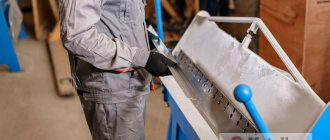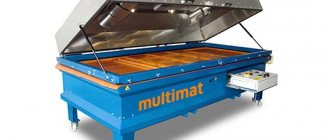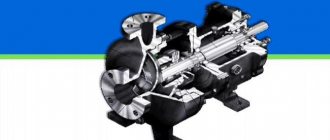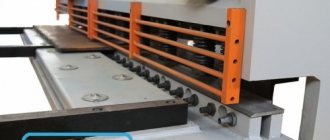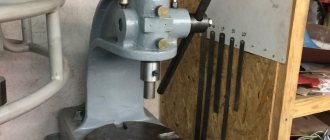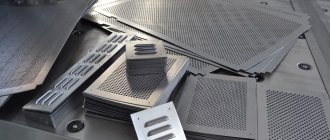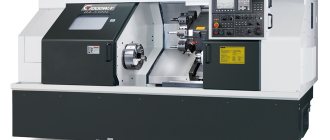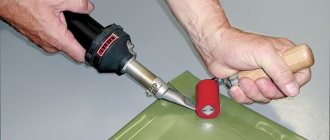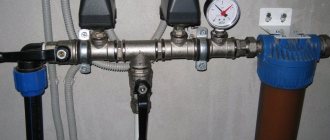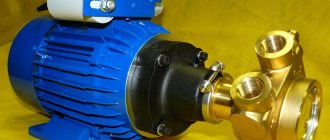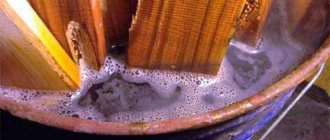Demand for pressing equipment for recycling scrap metal
Scrap metal presses are used in many industrial fields: metallurgy, mechanical engineering, waste recycling and other industries. Metal, simply divided into measured fragments, is not sent to the plant, since it has insufficient density. Bunching machines are mandatory equipment for metal processing. They are equipped with a hydraulic drive.
Equipment of this type is widely used because:
Press machine for scrap metal
- allow you to use warehouse space more efficiently after receiving compact bars;
- transportation of rectangular briquettes is faster and easier than non-standard scrap;
- recycling of secondary raw materials is a profitable business.
The operating parameters and dimensions of metal palletizing presses are established by GOST 9860-98 standards. The standard regulates the productivity of the pressing stages and the chamber volume required for processing ferrous and non-ferrous scrap. Baling machines compress scrap of any kind, rolled products, sheets, pipes, profiles, rods, shavings, and other metal waste.
The quality of packaging equipment is determined by the density and uniformity of the resulting blocks. To obtain stable packages, scissors are built in.
Press equipment arrangement
The operating principle of the machines is simple. Raw materials are loaded into a steel box using a grab crane. The full box is rotated to pour the metal into the press chamber. The lid closes and the packaging process starts. Vertical and horizontal cylinders are automatically put into operation. At the end, the pressing punch pushes the finished compressed package onto the conveyor belt.
The efficiency of the equipment is assessed by the density of the resulting briquette. The standard figure varies from 30 to 60% (of the density of the feedstock). At least 60% are produced by modern machines. Technical characteristics, capabilities and price of equipment depend on the type of model.
Classification of scrap metal presses
To bring recyclable materials to a minimum volume, two main types of baling machines are used:
- horizontal press;
- vertical press and compactor.
Horizontal presses are stationary installations. They are used in enterprises that work with recyclable materials on a regular basis. The pressing part of these devices is rigidly fixed, the carriage moves horizontally. Such presses reduce metal by a factor of 1/3.
They are divided into equipment with high (70 tons per cycle) and standard productivity. The pressing process in them is fully automated: from feeding to tying the bales with wire. The devices are economical and use small amounts of electricity.
Vertical machines are in demand in factories with small areas. The press plate in them compresses the scrap from top to bottom. They are designed to be installed near the place where scrap is stored. The raw materials are immediately placed in a container. Used by large and small recycled materials processing plants.
Vertical devices compress any solid waste and metal. The force varies from 2 to 60 tons. To increase the productivity of the machine, additional press chambers are installed. Compactors are a type of vertical presses. They are used for recycling scrap in small quantities.
Baling press machines are divided into three groups depending on power:
- low-power - with a nominal force of up to 2500 kN, productivity of up to 6 tons/hour;
- medium power presses - with a force of up to 6300 kN, producing up to 20 t/h;
- high-power equipment - with compression up to 31,500 kN, processing up to 45 t/h.
Main parts of a mechanical crank press
Based on the type of drive, scrap metal presses are divided into hydraulic and mechanical machines. Hydraulic equipment always has only a horizontal design. This is due to the ease of downloading.
Types of hydraulic presses
Among metal presses, hydraulic machines are the most common. They are high performance equipment. Modern models are modernized, easy to maintain, operate quietly, and are easier to install and manage. The hydraulic press can be used separately or in a processing complex.
Hydraulic-based machines are classified:
- in terms of power and effort;
- by type of camera for loading;
- according to the capabilities of chambers for pre-pressing;
- in terms of performance and final dimensions of the resulting packages.
The meanings of the first two digits in the designations of hydraulic presses
Briquetting presses are included in a separate group among hydraulic machines. This equipment is used to create bags from metal shavings - waste from mechanical processing.
Design examples
Vibration and mechanical stability of the press are very important when repairing and maintaining cars; especially cars. Scuffing and misalignment of the fit of mating parts is not everything; the appearance of the machine is also important. That is, the press used for straightening and/or tuning a car must have the smoothest possible motion and be as accurate as possible. This is achieved by the increased material and labor intensity of the design: the columns are made of turned steel, and the table and traverses are made of solid metal plates.
Drawings of a hydraulic press from a jack with increased accuracy and stability are shown in Fig.:
Drawings of a hydraulic press (from a jack) of increased accuracy and stability
Without compromising the performance of the press, in the geometric center of its upper fixed traverse (part 1), you can drill a hole with a diameter of up to 40 mm for the passage of the shaft/axis when pressing mating parts onto it or, conversely, pressing it out of them. Maximum short-term (10 min/1.5 hour break) working force – approx. 10 ts.
On the trail. rice. Drawings of a press of a similar design and technical design, but for production and technological purposes, are given.
Drawings of a production and technological hydraulic press from a jack with a force of 12 tf
The maximum force is already regular long-term: up to 50% of the working time, therefore the design of this product is much more complicated. The special feature of this press is its double combination frame. Its chassis is on round turned columns, and its support is welded from channels. This frame dampens vibrations very well in almost any fashion. The fact is that the mechanical quality factor of a square pipe welded end-to-end from channels is very low: the elastic waves that enter it, figuratively speaking, become entangled in metal of uneven thickness and are additionally damped in the welds. For more information on the experience of amateur manufacturing of hydraulic presses from jacks, see the video:
Video: press with an inverted jack and a frame made of corrugated pipes
Video: hydraulic press with movable table
Video: press with a movable traverse
Note: just in case - in Fig. drawings of a hydraulic press frame from a jack for a force of up to 100 tf.
Press hammer
To put an end to repair and technological presses, let’s remember what we promised: how can impact pressing be used in a home workshop or at an individual entrepreneur? In the form of a pedal press hammer; It can be used as forging, riveting and stamping.
Presses of this type are also called lever hammers. Their ancestor is a forging hammer driven by a water wheel. The impact force of the press hammer is far from record-breaking, only a few thousand tons. But due to the characteristics of the behavior of metal under impact described above, lever hammers are quite effective, especially since the force and speed of the impact can be adjusted accordingly. character by pressing the pedal.
Arrangement of lever hammers for impact pressing
The kinematic diagram of the lever hammer is shown in pos. a) Fig., and in pos. b) – a device of its traditional type. At pos. c) – a device for an improved lever hammer: a parallelogram suspension of the upper striker (as the punch is called in this case) on a pair of earrings (swinging arms) provides a direct blow, and by moving the rod clamp (carriage) along the lower earring, as shown by arrows, the impact force is precisely adjusted . A pair of springs (the lower one is adjustable) makes it possible to achieve mechanical indifference of the striker: within the working stroke, it remains in any position where it is placed by hand; this makes it possible, without changing the weight of the striker, to precisely regulate the kinetic energy stored in it. Even jewelers and yachtsmen use such lever hammers to install powerful grommets in sails and assemble useful things tightly.
Note: according to maritime terminology, useful things are items of supply that are immovable relative to the ship’s hull, manufactured on shore in production conditions - bollards, cleats, rollers, etc.
Review of popular models of scrap metal presses
The machines are made of durable, wear-resistant materials. Due to their compactness and small dimensions, individual models are included in production lines. Automated pressing equipment operates without failure.
Press Y81-135
Y81-135 is used to compress ferrous and non-ferrous metals for recycling. The design of the model is similar to the RICO-12 from Yugoslavia. During the two-stage cycle of the baling press, metal briquettes measuring 30x60 cm are formed. They are removed from the front, easily stored for transportation, and can be fed into the melting furnace in a loading container. The equipment is used in collection points and small scrap procurement companies.
The hydraulic press is compact, weighs 7 tons, compresses with a force of 135 tons. Small dimensions are associated with the absence of a side cylinder. The oil station and remote control are conveniently located. Y81-135 presses metal with a productivity of 2 tons/hour, controlled manually. The complete cycle of metal raw materials takes 2.5 minutes. Electric motor power – 18.5 kW. The cost of the machine is 2.8 million rubles.
Press BA-1330
The hydraulic press is designed for horizontal compression of all types of metal, scrap steel, and waste. At the last stage, a specialized machine BA-1330 presses with a force of 2550 kN or 1 MN. As a result, packages measuring 32x65 cm are formed. They are distinguished by their impressive weight (up to 50 kg). When packaging turning waste remaining after cutting and stamping metal sheets, shavings up to 10 cm long can be added.
The BA-1330 press is characterized by high productivity - up to 5000 kg/hour. Equipped with an 84 kW electric motor. The equipment weighs 8 tons. Technical characteristics differ for models from different manufacturers. You can purchase foreign analogues. The price of a domestic installation varies from 600 to 750 thousand rubles.
Press S-12
The S-12 baling press is used for processing metal waste up to 3 mm thick. Belongs to the RICO equipment complex. Such machines are often used at places where non-ferrous metals and steel waste are received. Packages measuring 60x40 cm are formed.
Model C-12 has two cylinders, is safe, works quickly, and is included in the loader. The compression force is 125 tons. The covers and walls of the pressing chamber are equipped with knives. Internal armor plates can be replaced. Electric motor with a power of 15 kW. The weight of the press is 8.16 tons.
The M 3 loader is designed for filling the tank and is equipped with a gripper with a capacity of 110 liters. The machine is equipped with a protected heated cabin (130x130 cm) for control. The cost of the press is from 500 thousand rubles.
Press PGP-15
The universal hydraulic machine PGP-15 produces packaging of waste paper, cardboard, plastic and metal recyclables. Recycling scrap requires the installation of special equipment. Presses non-ferrous metal, scrap ferrous metals with thin walls, shavings, barrels, cans, flasks. At an affordable price it has good characteristics.
The high-performance PGP presses with a force of 15 tons and forms bales weighing 230–300 kg. A full cycle is completed in 45 seconds. The machine weighs 850–1000 kg, does not require concreting, and is placed on stable ground. The press is equipped with an NSh-10 oil pump and a 3 kW electric motor. Operates on any oil at temperatures from -30 to +45ºC.
Improved models have 2 filters, a reinforced lock, limit switches, and can withstand a load of 30 tons. They are equipped with polyurethane seals and grooves for tying bales. The price of GGP pressing machines is from 150 thousand rubles.
Which one should I do?
Pressure pressing allows you to perform almost all pressing operations necessary in everyday life. Homemade presses are most often made energy-autonomous, i.e. without a separate drive, working fluid reservoirs, pumping stations, etc. The choice of one or another design of the press is ultimately determined by its purpose and working force.
It is easiest to use a car jack as a power unit built into the press - it develops a force of up to 100 tf, and jacks for 10 tf are commonly used. The only operation that a jack press cannot handle is molding (flattening) the ends of rods during artistic cold forging.
The most commonly used jack is a hydraulic bottle jack (but see also below). In this case, a hydraulic press can be made according to one of the traces. frame design diagrams (see figure):
Basic design diagrams of homemade presses
- Pos. A – the jack is turned upside down, tightly fixed to the fixed upper cross-beam, and a punch is attached to the head of the working rod of the jack. This is the simplest and at the same time reliable and vibration-resistant design (see below for the role of vibrations in the operation of the press). Disadvantages - if the jack is needed for its intended purpose, dismantling it is quite difficult and time consuming, and swinging the lever of a jack hanging upside down is not very handy.
- Pos. B – diagram with a movable table. Structurally more difficult, because a movable traverse is added - a table. They pump the jack as always, it’s easy to remove it, because... it may not be secured at all. Disadvantages – worst vibration resistance; in addition, the technology of most pressing operations is designed for the punch to press on the workpiece or part from above, but if it’s the other way around, it’s difficult and may not work out at all. But for repair and/or mechanical assembly work, this is the best option: if you need to squeeze out a tightly rusted shaft from a pulley or bearing or, conversely, press them onto the shaft, then its (the shaft’s) length is limited only by the height of the ceiling in the workshop. In general, a hydraulic press with a moving table made from a jack is the best option for a garage or service station.
- Pos. B – with a power unit on a movable cross-beam. Structurally the most complex, but vibration-resistant, strong and durable, because the load on the weakest link - the movable traverse - is not point-based, but actually dispersed. The jack may also not be secured, but if it turns out and crashes, the consequences will be worse than if it falls off the base plate. The disadvantage is that pumping a jack that slowly creeps down is not very convenient.
Note: the base plate is a heavy, bulky, material-intensive thing. Placing a press on a slab in a workshop or garage is not always possible. Therefore, the frame of homemade presses is most often placed not on a slab, but on a lower fixed cross-beam, structurally similar to the upper one (see below). This reduces the vibration resistance of the press by approx. twice, but for amateur conditions this is acceptable.
A manually driven screw press (pos. D) allows you to create a force of up to a maximum of 1.5-2.5 tf. In working with metal it is used when this is sufficient, in the following. cases (see also video):
When pressing force less than the specified values is sufficient:
Video: manual screw press for the workshop
Large stroke required:
Video: screw press 2/2
As a small or mini press for small, not very important jobs:
Video: small screw press
How to remove:
Video: homemade press for removing bearings and pulleys
Note: a structurally simple frameless lever hand press, pos. D in Fig. But it finds greater use in everyday life and households (see below), because with its help you can develop a force of no more than 300-400 kgf.
Is it just hydraulics?
A homemade jack press can be not only hydraulic. Many passenger cars are equipped with a diamond-shaped screw jack when sold. It produces a force of no more than 2-2.5 tf, but is cheap (“a new, good one” can be purchased for 1,300 rubles). A small amount of effort is not only a drawback: the frame of a press with a screw jack can be made of a wooden beam from 150x150, and it is also possible to adapt an electric drill to it as a drive, see fig.:
Homemade mechanical press with electric drive from a screw diamond jack
If the maximum you need is to bend rods up to 8-10 mm, such a press will be enough for that. And an interesting fact: about 10 years ago, the author of the article happened to accidentally meet a figure who, working 3-4 hours on the first 2-3 days of the week, earned 20-25 thousand rubles. per month At that time the amount was considerable. How? I bought empty metal cans for half the purchase price of scrap metal, flattened them and sold them at a normal price. Most of the cans they brought were beer ones, they are aluminum, and they are expensive. He complained, however, that the work was dirty - the bulk of the raw materials were brought in by homeless people.
Pressing and vibration
Vibrations of metal stretching during pressing are the scourge of large industry, and giant presses, like the one that NKMZ supplied to the French Forzhal from the USSR, are therefore extremely complex units. But individual entrepreneurs and amateurs should also pay the most serious attention to the vibration resistance of the press. A scuff on a hardened shaft or journal of an axle shaft is an irreparable defect.
Benefits of using presses
Using a scrap metal press allows you to:
- it is profitable to sell your own waste that has been packaged;
- earn more when delivering metal to processing plants, since briquettes are more expensive than simple scrap metal;
- reduce waste removal costs by 10 times and simplify waste transportation;
- save storage space if you have a vertical or horizontal machine;
- improve the environmental situation and fire safety at the enterprise. Compacted waste is less likely to ignite.
A hydraulic press will require 2–3 m2 of storage space. To operate the machine, they train their own workers directly on site. There is no need to search for and hire a new specialist with appropriate qualifications.
Bagging allows 1 ton of waste after processing to be placed on an area of 2 m2. Scrap metal with a thickness of 5 to 12 mm is suitable for loading. The performance of the equipment depends on the type, model and variety of metal. 40 bags in 60 min. – this is an average productivity that allows you to process 5–7 tons in 1 hour. The presses operate with a force from 3 to 16 MN. The engine power depends on the size of the machine. Maximum power – 750 kW.
The price of the equipment depends on the country of manufacture. Russian factories purchase domestic or Chinese-made units at affordable prices. Buying a used machine is a profitable option. After competent, careful operation, the press has a large residual life. The serviceability of the device is checked together with a qualified mechanic.
Related video: Baling press for metal
Useful articles
Features of self-production and use of a waste paper press
Stages and principles of scrap metal recycling
Real benefits from metal business
